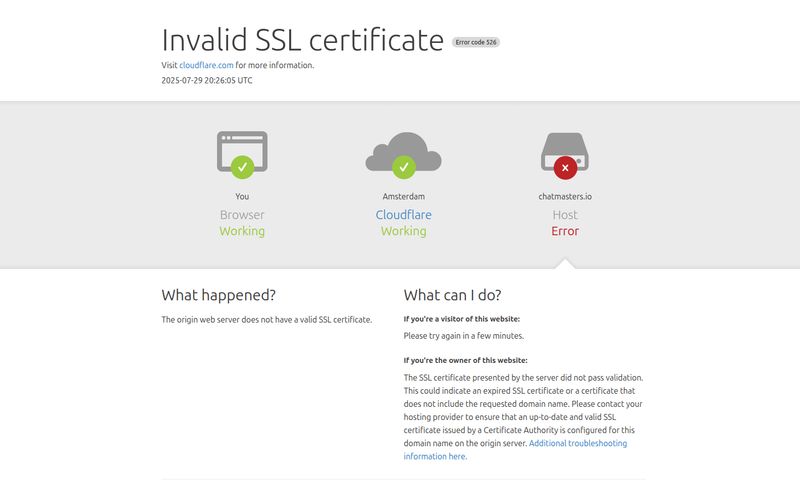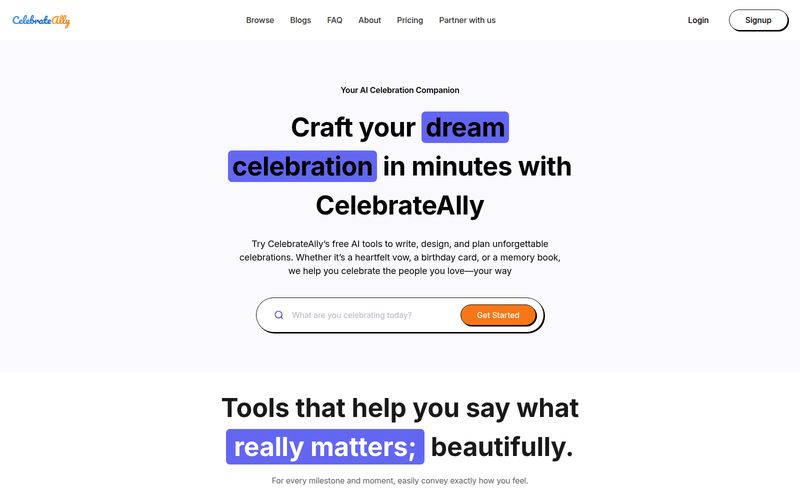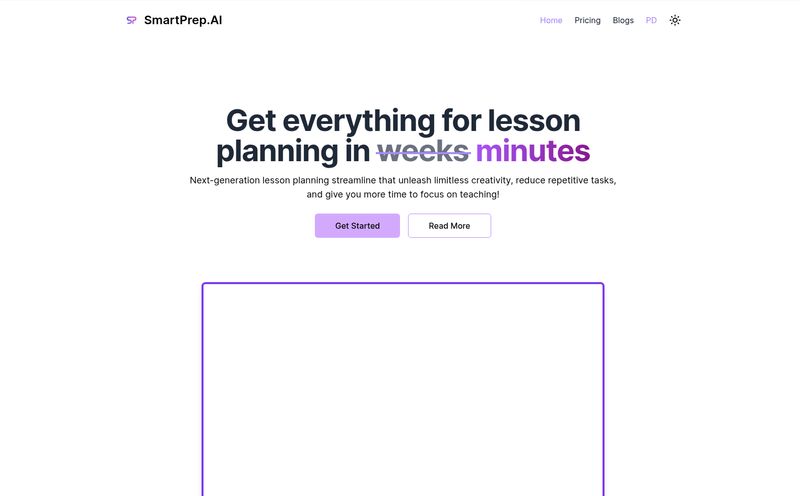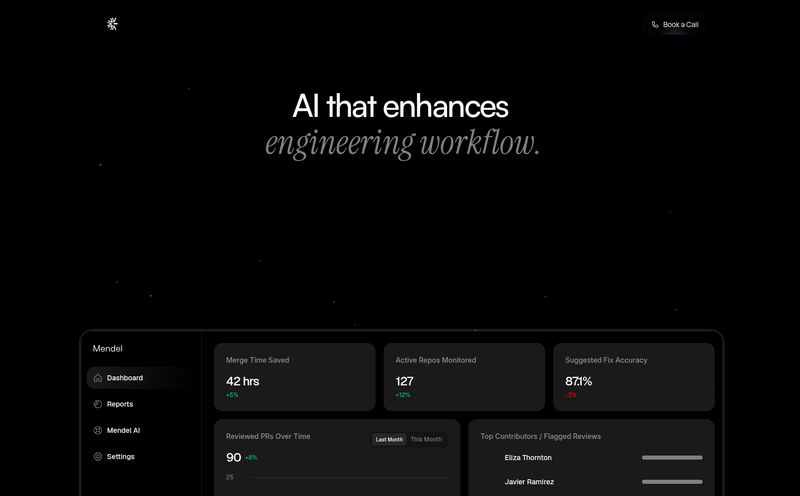Let’s have a little chat. You and me, marketer to marketer. We’ve all been there. Staring at a mountain of customer data—Google Analytics, your CRM, product usage stats, support tickets—and feeling… well, completely overwhelmed. We’re told the gold is in that data, that personalization is the key to unlocking massive growth. And it is! But turning that chaotic mess of numbers and events into a coherent, personalized experience for every single user? It feels like trying to conduct a symphony with a broken baton.
For years, the choice has been grim: either you spend a fortune on a team of data scientists and engineers to build custom solutions, or you settle for basic, rules-based personalization that barely scratches the surface. “If user visited pricing page, then show pop-up.” Groundbreaking stuff, right?
So, when I came across Coho AI, my professional curiosity was definitely piqued. It makes some pretty bold claims about using AI to automate user segmentation and personalize journeys to boost conversions. Another AI tool promising the world? Maybe. But something about their approach felt different. So I decided to do a deep dive, and here's what I found.
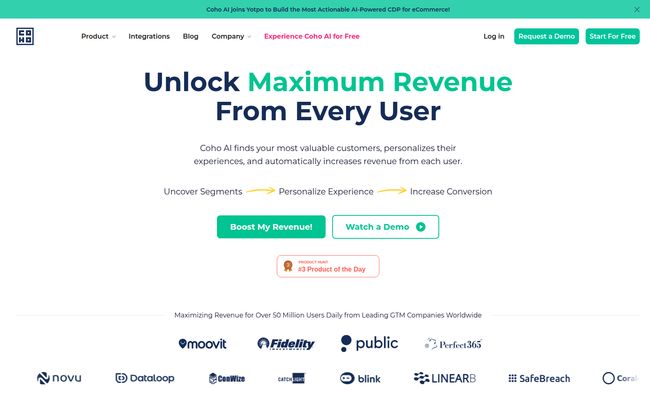
Visit Coho AI
What Exactly Is Coho AI Trying to Solve?
At its heart, Coho AI isn't just another analytics dashboard. I think that's the most important thing to grasp. It’s an action platform. It’s designed to bridge that massive, frustrating gap between having data and actually doing something meaningful with it. The platform positions itself as a customer journey optimization and retention system. In plain English, it looks at how users behave inside your product or on your site, figures out what they need to do next to become a happy, paying customer, and then helps them get there.
It’s built to turn that data chaos into clarity. Instead of you manually trying to create user segments—'power users,' 'users at risk of churning,' 'users who almost bought something'—Coho’s AI does the heavy lifting. It sifts through the noise to find valuable customer segments you probably didn't even know existed.
Breaking Down the Coho AI Method
So how does the magic happen? From what I can gather from their site, it’s a pretty logical, four-step loop. It’s not some black box you just have to trust; there’s a clear process at play.
Step 1: It Connects to Your World
First things first, Coho AI integrates with your existing data sources. Think Segment, Mixpanel, Amplitude, your own databases... This is the foundation. Without data, the AI has nothing to work with. This is a crucial first step for any tool in this space, and they seem to have the main players covered.
Step 2: The AI Puts on Its Detective Hat
Once the data is flowing, the AI gets to work identifying the most impactful actions and user segments. This, for me, is the core value proposition. It’s not just looking at demographics; it’s analyzing behavior. It finds those patterns that correlate with high lifetime value (LTV) or conversion. For instance, it might discover that users who use Feature X within their first three days are 50% more likely to become long-term subscribers. That's not just an interesting stat; it’s a golden ticket.
Step 3: It Crafts a Personal Journey
Here’s where insight turns into action. Based on the segments it identified, Coho AI helps you deliver personalized experiences. This could be anything from a targeted in-app message encouraging a user to try that 'golden ticket' feature, a special offer sent to a segment that’s on the verge of churning, or a unique onboarding flow for a high-potential user. The goal is to give each user the right nudge at the right time.
Step 4: It Measures and Improves
This whole thing is a continuous loop. You don't just set it and forget it. The platform measures the impact of these personalized journeys on your key metrics—conversion rates, retention, LTV. This iterative process means the system is constantly learning and refining its strategies. What worked this month might be improved next month.
The Big Promises: Can Coho AI Really Deliver?
Okay, let's talk about the results they're touting. The website mentions some eye-popping numbers: a 93% skyrocket in conversions, 88% user retention, and a 47% lift in LTV. As a seasoned pro, I always take figures like this with a grain of salt—these are obviously best-case scenarios from happy clients. However, they point to the potential power of this approach.
What I find more compelling are the underlying benefits. The promise of a no-code setup for campaigns is huge. It means marketing and growth teams can actually launch these experiments without filing a ticket with engineering and waiting six weeks. That agility is priceless. It puts the power to drive growth back into the hands of the people who are measured on it.
The idea of 'Smart Automation' also resonates. We're not just automating repetitive tasks; we're automating the complex decision-making of what to show to whom and when. That’s a higher level of automation that, until recently, was pure science fiction for most companies.
And the promise of seeing a 'fast impact' in just 30 days is a bold one. In a world of martech tools that take six months just to implement, that’s a very attractive claim. It suggests the platform is built for speed and tangible results, not just endless analysis.
Let's Be Real: The Potential Hurdles
Now, no tool is a magic wand. Based on my experience with similar platforms, there are a few things to keep in mind. Let’s call them realities, not roadblocks.
First, the classic principle of garbage in, garbage out. Coho AI's effectiveness is going to be directly tied to the quality and completeness of your data. If your event tracking is a mess or your data is siloed and incomplete, the AI won’t be able to work its magic. So, a bit of data hygiene is a prerequisite. You have to give it good clay to sculpt a masterpiece.
Second, while it’s a “no-code” campaign builder, there’s still an integration phase. You need to connect your data sources. This is unavoidable. It's the price of admission for any powerful data tool. And like any powerful tool, there's probably a bit of a learning curve to really master all its features and think strategically about the campaigns you want to build. It’s not a weakness of the platform; it’s the nature of doing sophisticated marketing.
Who Is This Really For?
Looking at the client logos on their site—companies like Fidelity, Public, and Dataloop—it's clear Coho AI is aimed at businesses that have a significant volume of users and data. I'd say this is perfect for established SaaS and FinTech companies that have hit product-market fit but are now facing the next big challenge: optimizing the customer lifecycle at scale.
If you're a startup that just launched last month and you have 50 users, this is probably overkill. But if you have thousands of users and you feel like you're leaving money on the table because you can't engage with them effectively, you are squarely in Coho AI’s target audience.
So, What's the Price Tag?
Ah, the million-dollar question. Or, hopefully, a bit less. Like many B2B SaaS platforms targeting mid-market and enterprise clients, Coho AI doesn’t have a public pricing page. You won’t find a neat little table with 'Basic,' 'Pro,' and 'Enterprise' plans.
This is standard practice. Pricing is likely customized based on factors like your monthly active users, data volume, and the specific features you need. The call to action on their site is to “Request My Revenue” or “Watch a Demo.” My advice? If you fit the profile I described above, getting a personalized demo is the logical next step. It's the only way to know if the potential ROI makes sense for your specific business.
My Final Verdict on Coho AI
After digging in, I’m genuinely optimistic about what tools like Coho AI represent for the future of marketing. For too long, true behavioral personlization has been an exclusive club, reserved for the Netflixes and Amazons of the world. Coho AI appears to be a serious contender in the movement to democratize that power.
It’s not a simple plug-and-play solution that will magically fix a broken product. But it is a powerful lens and lever for businesses that have good fundamentals and a wealth of user data they’re struggling to activate. It tackles a very real, very expensive problem by automating the discovery of insights and the delivery of personalized experiences. If you’re drowning in data but thirsty for growth, I think getting a demo of Coho AI could be a very, very smart move.
Frequently Asked Questions
- 1. What is Coho AI in simple terms?
- Coho AI is an AI-powered platform that helps businesses increase their revenue by automatically understanding user behavior and delivering personalized experiences to each user, encouraging them to convert and stay longer.
- 2. How does Coho AI actually increase revenue?
- It increases revenue by improving key growth metrics. By personalizing the user journey, it boosts conversion rates, increases the lifetime value (LTV) of customers, and improves user retention, all of which directly contribute to top-line revenue.
- 3. Is Coho AI difficult to set up?
- While it requires integrating your existing data sources, the platform advertises a no-code setup for launching personalization campaigns. This means once the initial data connection is made, marketing teams can create and manage campaigns without needing constant developer support.
- 4. Who is the ideal user for Coho AI?
- The ideal user is a mid-market to enterprise-level business, particularly in SaaS or FinTech, that has a substantial amount of user data but struggles to use it effectively for personalization and optimization at scale.
- 5. How quickly can you see results with Coho AI?
- Coho AI claims that customers can see a significant impact on their metrics within 30 days of implementation, which is much faster than many traditional enterprise software rollouts.
- 6. Does Coho AI have transparent pricing?
- No, Coho AI does not list prices on its website. Pricing is customized based on a company's specific needs, such as data volume and user count. To get a price, you need to request a demo and get a custom quote.
